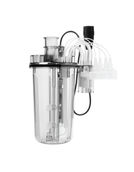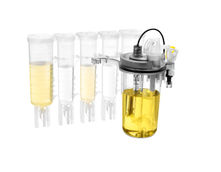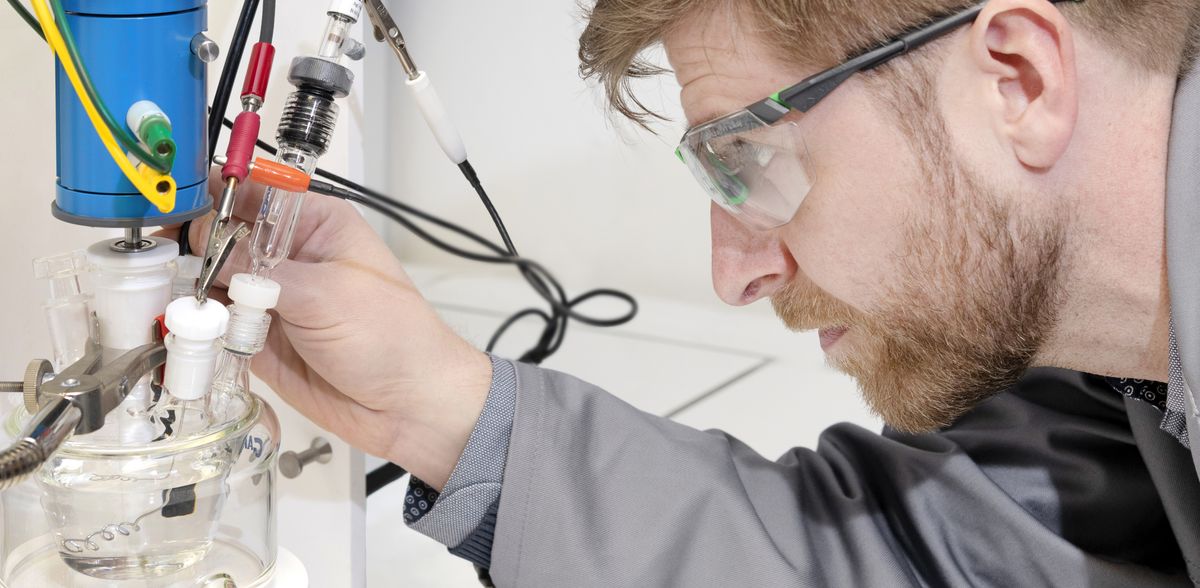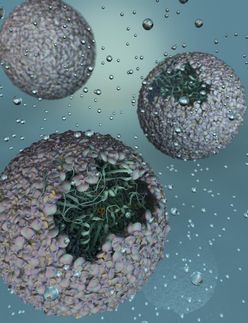Converting carbon dioxide into useful chemicals with the help of bacteria and solar power
How electrolysis and fermentation can be combined in one system
Researchers at BAM have developed a new technology that uses bacteria and solar power to produce useful chemicals from CO2. In the future, this could be used in industry to reduce greenhouse gas emissions instead of releasing them into the atmosphere.
Reducing the greenhouse gas CO2 is crucial to limiting the consequences of climate change. In this context, interest has grown in biocatalytic processes that can bind CO2 emissions and convert them into useful chemicals.
It is known in principle that carbon dioxide can be electrochemically upgraded with the help of bacteria. To do this, the processes of electrolysis and fermentation are combined: CO2 is first reduced to CO and then metabolized by bacteria to acetic acid or also to ethanol or butanediol - acids and alcohols that can serve as starting materials for specialty chemicals.
Until now, however, electrolysis and fermentation have taken place in two separate steps. This is because the catalysts of the electrolysis devices, which are made of gold, silver or copper, are sensitive to the liquid required for fermentation. In turn, the metals are not compatible with the beneficial microorganisms due to their antibacterial effect.
A BAM study now shows how electrolysis and fermentation can be combined in one system. The team has developed novel carbon-based catalysts for this purpose. The materials are biocompatible, meaning they do not impair the function of the bacteria, and are also significantly cheaper than previous catalysts.
The feasibility of the concept was successfully demonstrated in standardized bioreactors. An optimized process could therefore be quickly brought into industrial application.
"Our research results are an important step towards the sustainable and decentralized production of CO2-based chemicals. They show the potential of combining biological and electrocatalytic processes," explains Tim-Patrick Fellinger, Head of the Department of Electrochemical Energy Materials at BAM. "The technology could be used decentrally and in combination with green electricity from solar plants in places where carbon dioxide is constantly produced during production processes and has so far been released into the atmosphere as a greenhouse gas due to a lack of alternatives."
Note: This article has been translated using a computer system without human intervention. LUMITOS offers these automatic translations to present a wider range of current news. Since this article has been translated with automatic translation, it is possible that it contains errors in vocabulary, syntax or grammar. The original article in German can be found here.
Original publication
Original publication
Irina Schwarz, Arielle Rieck, Asad Mehmood, Raphaela Bublitz, Lukas Bongers, Dirk Weuster‐Botz, Tim‐Patrick Fellinger; "PEM Electrolysis in a Stirred‐Tank Bioreactor Enables Autotrophic Growth of Clostridium ragsdalei with CO2 and Electrons"; ChemElectroChem, Volume 11, 2024-1-18
Topics
Organizations
Other news from the department science
These products might interest you
 New
New
Flexcell Zelldehnungsbioreaktoren für zelluläre Biomechanik-Anwendungen by Dunn
Cell Stretching Bioreactors for Life Science Research
Used in over 1300 laboratories worldwide, and cited in over 9000 research publications

Biostat STR by Sartorius
Biostat STR Generation 3 Bioreactors
Engineered for Ultimate Upstream Performance

Ambr® 250 HT Consumables by Sartorius
Efficient bioprocesses with single-use bioreactors
Minimise cleaning effort and maximise flexibility for cell and microbial cultures

Ambr® 250 Modular by Sartorius
Mini bioreactors for cell and gene therapies with high scalability
Maximise your process development with reliable single-use vessels

Get the life science industry in your inbox
By submitting this form you agree that LUMITOS AG will send you the newsletter(s) selected above by email. Your data will not be passed on to third parties. Your data will be stored and processed in accordance with our data protection regulations. LUMITOS may contact you by email for the purpose of advertising or market and opinion surveys. You can revoke your consent at any time without giving reasons to LUMITOS AG, Ernst-Augustin-Str. 2, 12489 Berlin, Germany or by e-mail at revoke@lumitos.com with effect for the future. In addition, each email contains a link to unsubscribe from the corresponding newsletter.


















































